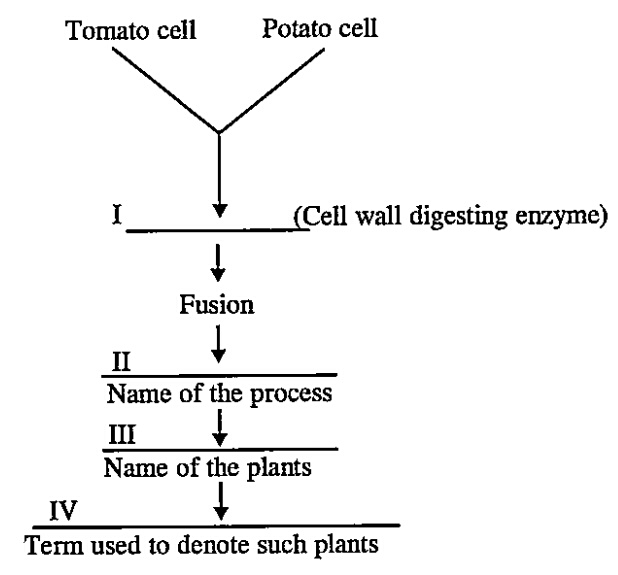Study the given flow chart carefully and fill in the blanks by selecting an appropriate option.A i - Electron number ii - Valency iii - Oxidation number iv - Electronegativity v - Metallic character B i - Neutron number ii - No. of electrons iii - No. of valence electrons iv - lonisation energy v - Non metallic character C i - Proton number ii - No. of electron shells iii - No. of valence electrons iv - Atomic radius v - Metallic character D i - No. of electron shells ii - No. of valence electrons iii- No. of electron shells iv - lonisation energy v - Non metallic character
C i - Proton number ii - No. of electron shells iii - No. of valence electrons iv - Atomic radius v - Metallic character
Related Solutions
The electronic configuration of an element X is: K L M 2,8,6 (i) What is the group number of element X in the periodic table? (ii) What is the period number of element X in the periodic table? (iii) What is the number of valence electrons in an atom is X ? (iv) What is the valence of X ? (v) Is it a metal or a non metal?
View SolutionWhat is meant by a group in the Modern Periodic Table? How do the following change on moving from top to bottom in a group?
i] Number of valence electrons
ii] Number of occupied shells
iii] Size of atoms
iv] Metallic character of elements
v] Effective nuclear charge experienced by valence electronsView SolutionAtomic number of an element is 16. Predict. (i) the number of valence electrons in its atom (ii) its valency (iii) its group number (iv) whether it is a metal or a non-metal (v) the nature of oxide formed by it. (vi) the formula of the chloride.
View SolutionHow many electron protons and neutrons in a nucleus of atomic number 11 and mass 24 ? (i) number of electron = (ii)number of proton = (iii)number of neutrons =
View SolutionHow do the following properties of elements change in a group of the periodic table ? (i) size of atoms (ii) Valency (iii) Ionization energy (iv) Electron affinity (v) Metallic character (vi) Chemical reactivity
View SolutionThe valency of an element depends on which of the following? I. On the number of electrons to be discarded II. number of electrons to be accepted III. on the number of electrons to be shared
View SolutionValency of an element depends on which of the following?
I. Number of losing electron
II. Number of gaining electron
III. Number of sharing electronView SolutionFill in the blanks ,, and respectively in the given flow chart.
 .View Solution
.View SolutionWhich of the following are true for an element ?
(i) Atomic number = number of protons + number of electrons
(ii) Mass number = number of protons + number of neutrons
(iii) Atomic number = number of protons = number of neutrons
(iv) Atomic number = number of protons = number of electronsView SolutionWhich of the following are true for an element ? (i) Atomic number = number of protons + number of electrons (ii) Mass number = number of protons + number of neutrons (iii) Atomic number = number of protons = number of neutrons (iv) Atomic number = number of protons = number of electrons
View Solutioncertain particle x has 17 protons 17 electrons and 18 neutrons
(i) What is the mass number of X?
(ii) What is atomic number of X?
(iii) What is valency of X?
(iv) identify the elemnet.View SolutionAn element has same number of electrons in I and IV shells and in the II and III shells
i] Write its electronic configuration
ii] Write the group and period it belong
iii] What is the valency of the elementView Solutionएक तत्व के लिए निम्नलिखित में से कौन-से विकल्प सही हैं?
(i) परमाणु संख्या = प्रोटॉनों की संख्या + इलेक्ट्रॉनों की संख्या
(ii) द्रव्यमान संख्या = प्रोटॉनों की संख्या + न्यूट्रॉनों की संख्या
(iii) परमाणु द्रव्यमान = प्रोटॉनों की संख्या + न्यूट्रॉनों की संख्या
(iv) परमाणु संख्या = प्रोटॉनों की संख्या + इलेक्ट्रॉनों की संख्याView SolutionIndicate the number of unpaired electrons is
.View Solutionएक तत्व 'X' आवर्त सरणी के वर्ग 14 तथा आवर्त 2 से सम्बंधित है, बताइए- (i) परमाणु 'X' में संयोजक इलेक्ट्रॉन की संख्या , (ii ) 'X' की संयोजकता, (iii ) धातु या अधातु (iv ) तत्व का नाम।
View Solutionan anion X^(-3) It has 36 electrons and 40 neutrons. Answer the following - (i) What is the atomic number of X? (ii) What is the mass number of X? (iii) What is the electronic number of X? (iv) What is the maximum valency of X? (v) What is the square number of X in the periodic table?
View SolutionFill in the blanks: In the family of alkali metals, the number of valence electrons is __________ .
View SolutionAn element is in second period and group 16 of the periodic table:
(i) Is it a metal or non-metal?
(ii) What is the number of valence electrons in its atom?
(iii) What is its valency?
(iv) What is the name of the element?
(v) What will be the formula of the compound formed by with sodium?View Solutionएक तत्व Y आवर्त सारणी के दूसरे आवर्त और वर्ग 16 में है -
(i)क्या वह धातु है या अधातु ?
(ii) उसके परमाणु में संयोजकता इलेक्ट्रॉनों की संख्या क्या है ?
(iii) उसकी संयोजकता क्या है ?
(iv) तत्व का नाम क्या है ?
(v) Y द्वारा सोडियम के साथ बनाये गये यौगिक का सूत्र क्या होगा?View SolutionAn element A belongs to third period and group 1 of the periodic table. Find out: (i) the number of valence electrons in its atoms (ii) valency of the element (iii) metal or non-metal (iv) name of the element (v) name of the family to which this element belongs
View Solution
